This week, I am reaching out to you from the famous Omo Valley in the south of Ethiopia, known as the Horn of Africa, and I want to tell you about the nature, history, people and culture of this beautiful country that I have never imagined.

To go to the Omo Valley in Ethiopia, we board our small propeller plane from Addis Ababa and fly to the city of Jinka, located approximately 460 kilometers southwest of the capital. It is April and wonderful weather greets us. Although it rains occasionally, the weather is generally very nice.
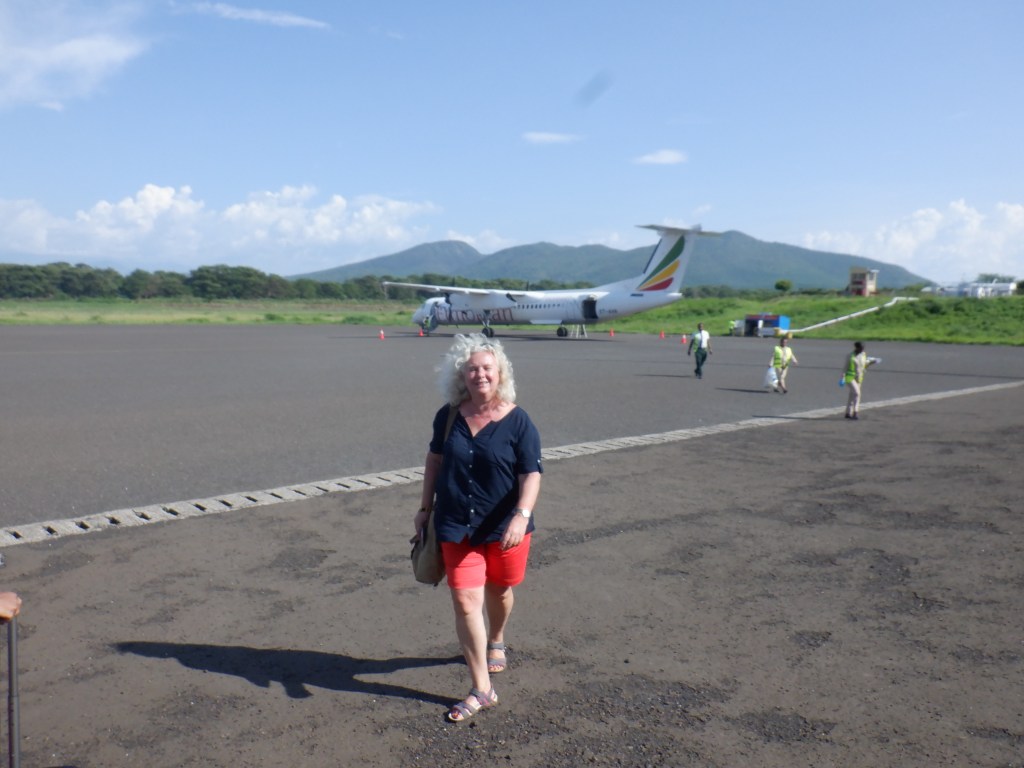
Omo Valley takes its name from the Omo River, which has its source in the Ethiopian Plateau and flows approximately 644 kilometers into Lake Turkana on the Kenyan border. It received the title of UNESCO World Heritage Site in 1980 due to its unique natural and cultural structure and extraordinary archaeological importance.
From the window of my plane, I can see the vast green forests and valleys of Omo National Park below and I feel a great excitement because we will visit the world-famous Omo Tribes here.
A surprise awaits us when we land at Jinka Airport. There is no such thing as an airport!
We land on a runway in a tiny field with our small plane and get off our plane from the two-step staircase, but there is no airport building or any other feature of the airport around.
About a hundred meters away, two small barracks similar to our construction sheds can be seen.


One of them is the arrival terminal and the other is the departure terminal. We walk along a muddy dirt road to these small huts and pick up our luggage, which was brought by a simple vehicle, without getting muddy.

On the other side of the shed, our 4×4 vehicles that will provide transportation in the region are waiting for us.

We will dive into the depths of the Omo Valley with our jeeps for a week, travel from hill to hill, meet with different ethnic groups and explore the surroundings. Our local agency, local guide and drivers provide us with significant support on this very challenging track.
There are more than eighty tribes in Ethiopia, and more than fifty of them live in the southern regions of Ethiopia. We will visit some of them during this trip and try to get to know them better. Ethiopia’s overall population is 125 million, but these small ethnic groups we will visit have only a few hundred or a few thousand members.
These tribes living in the Omo Valley are among the poorest people on the African continent and normally struggle to survive completely alone with nature, but visiting the tribes by tourist groups like us provides additional income to the tribes and a significant contribution to their survival.
Early in the morning, we set off with our vehicles to reach the area where the Mursi Tribe lives through Omo National Park.
Even in the first minutes, Omo National Park really fascinates me because such a dense, lush, beautiful nature welcomes us that I cannot explain.
This is a magnificent, quiet, untouched destination, disconnected from the world.
You hear nothing but bird calls and the sound of the wind.
Our vehicles move in convoys, passing through the forest on dirt roads and sometimes through rivers.


Thousands of colorful butterflies accompany us on the way.

Wherever we look, we encounter a magnificent natural structure. The air is fresh and sparkling. Since it has just rained, the big leaves of all the trees and plants are clean and green.
Omo Valley covers an area of approximately 4000 square kilometers and has extraordinary flora and fauna. The valley provides a habitat for 73 types of mammals and 312 bird species, such as water buffalos, monkeys, zebras, various antelopes, elephants, leopards, tigers, cheetahs, giraffes, hyenas, rhinos, hippos, crocodiles and African wild dogs.
As we move deeper into the forest, one of the first animals that greet us is a flock of baboons.

Very interestingly, they appear on the dirt road and approach us in a very confident and curious manner, as if we are the rulers of this place. There are also baboon mothers with babies.
After watching us for a while and satisfying their curiosity, they disappear into the forest.
Along our way, we also come across dikdiks, the smallest antelope species, and kudus, a large antelope species.
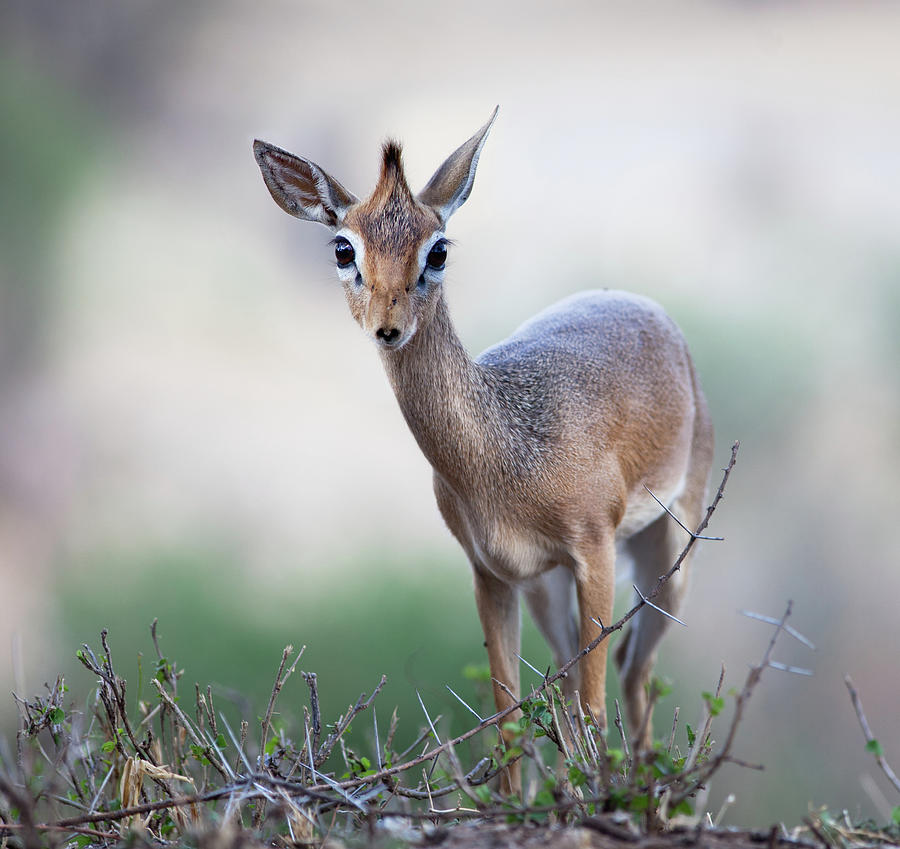
We see many colorful endemic bird species, vultures, hawks, herons and sea eagles in the trees.
After a two-hour journey through the Omo Valley with our vehicles and not seeing a single person, we start to see young men of the Mursi Tribe on the side of the road, one by one.
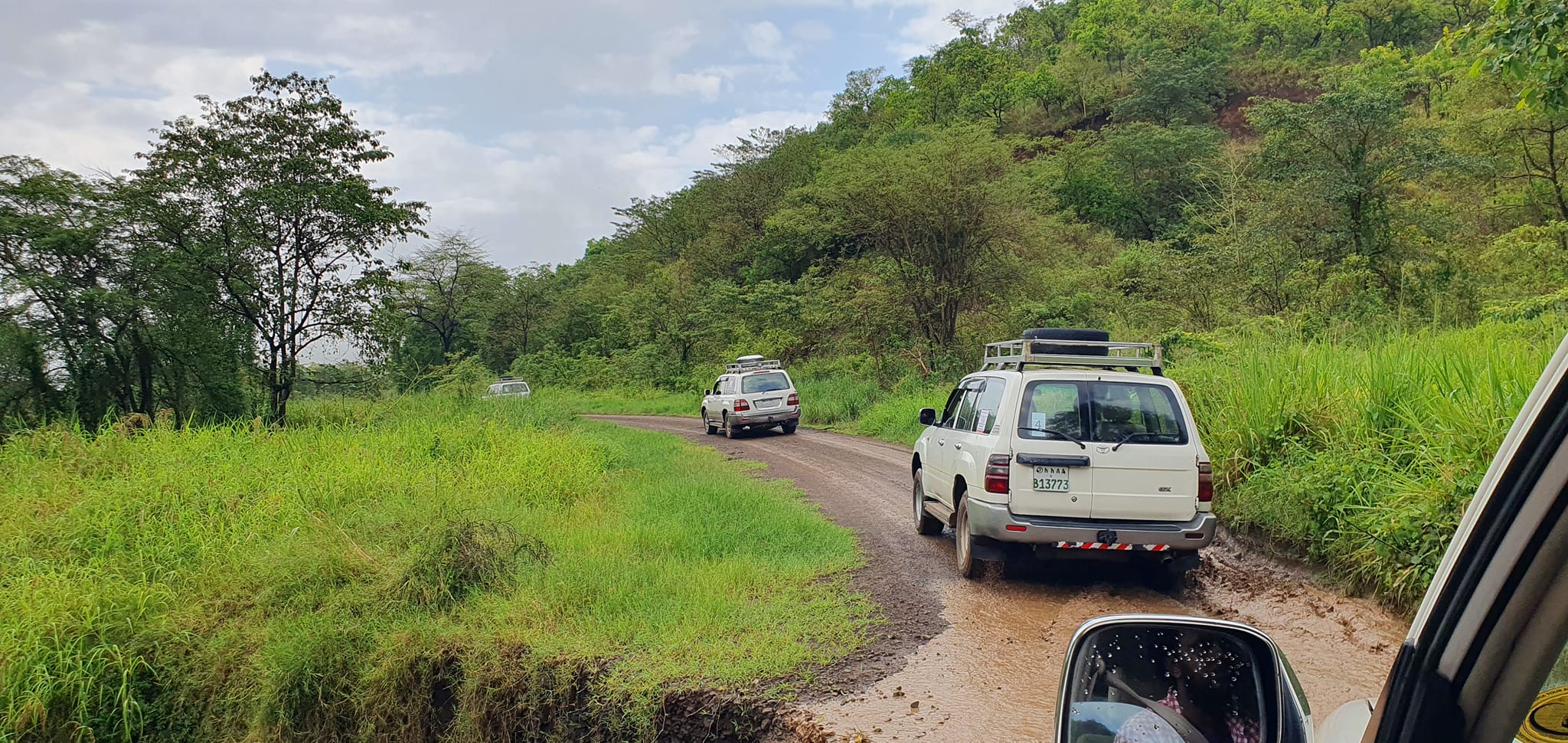

They are like a pioneer group welcoming us, but their expressions are extremely serious and stern, I would even say a little frowning.
While they are herding their goats and cows with wooden staffs in their hands, they are keeping watch on the road and probably informing the tribal leader that we have arrived.
They don’t want their photos to be taken.
Ten minutes later, we arrive at the entrance of the village and park our vehicles under the trees.
The first person to greet us in the village is the chief of the tribe, accompanied by young people and children.
I wasn’t expecting such a crowded reception, but the number of children in the village is especially high and they naturally come to us with curiosity.

The tribal leader invites us into the village. Since the tribe has its own language, our guide and the tribal leader communicate by speaking Amharic among themselves.
The Mursi Tribe, with a total population of around ten thousand, is one of the most isolated communities located in the Omo Valley, on the border with South Sudan. They generally live by the river in groups of 100-200 people, hunt and have their own rituals. They are a nomadic tribe and after living in one region for a while, they relocate again due to changing living conditions. They build the tiny huts they live in from wooden tree branches and reeds.
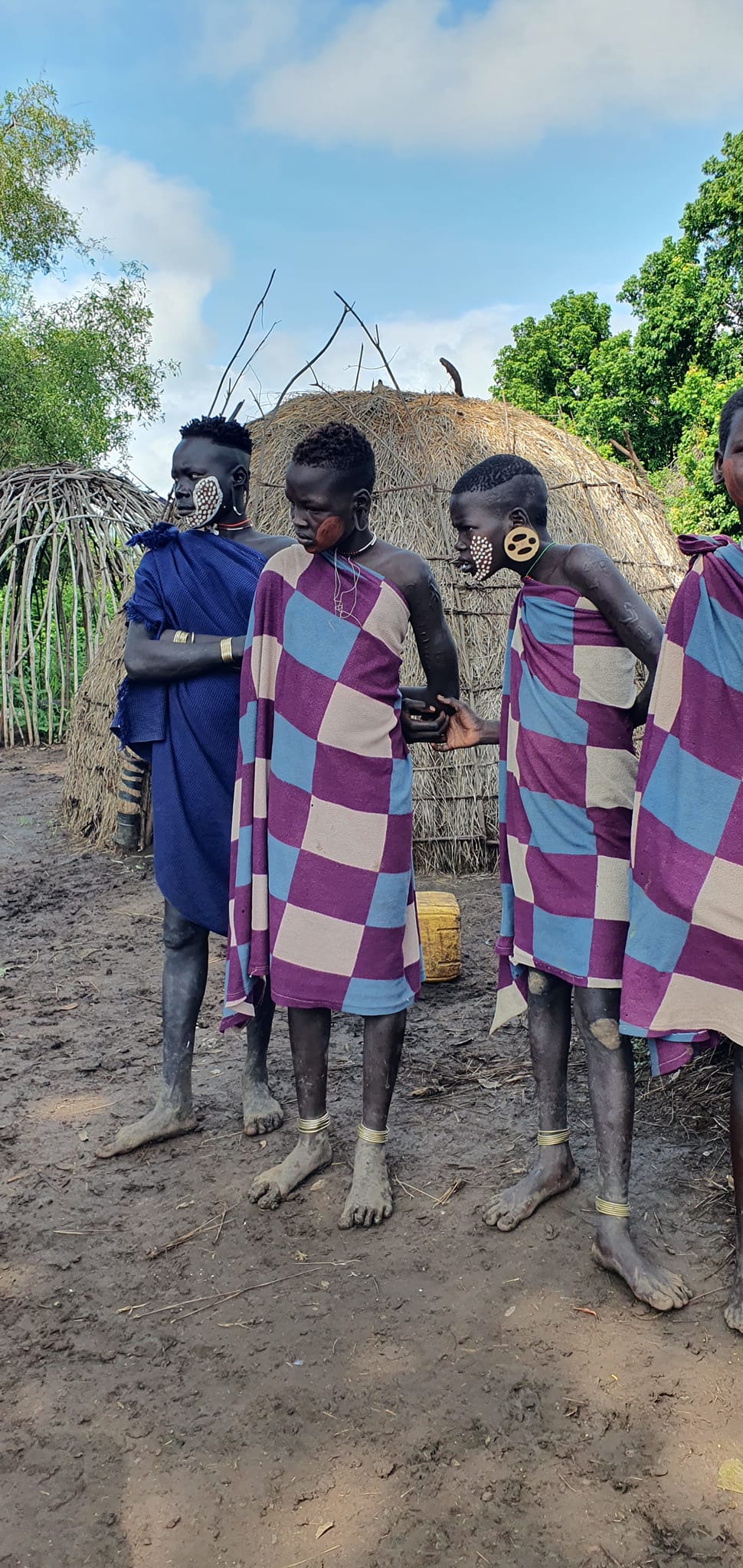
One of the most distinctive features of the Mursi Tribe is the decorative plates or discs made of clay and wood that women place on their lower lips.
When a young woman reaches marriageable age at the age of 15-16, she begins to make room for these plates by splitting her lower lip during the engagement period and carries these discs for ornamental purposes. For the Mursi, these plates are a symbol of beauty and wealth in women.



For men, violence is a sign of power and dominance and defines their status within the tribe.
For example, when a woman or man kills an elephant, it gives him or her an important status and power within the tribe.
For example, a woman who kills an elephant gets its water without waiting in line while going to fetch water.
Men drink the hot blood of the cows they slaughter. Drinking blood is also a phenomenon that shows men’s power and status within the tribe, but they do not kill cows very often because the number of animals they own also determines their power within the tribe.


Mursis generally marry within their own tribe and do not mix with other tribes.
When we enter the village with the tribal chief, we see that the women have set up stalls on the ground for us to display the products they make.
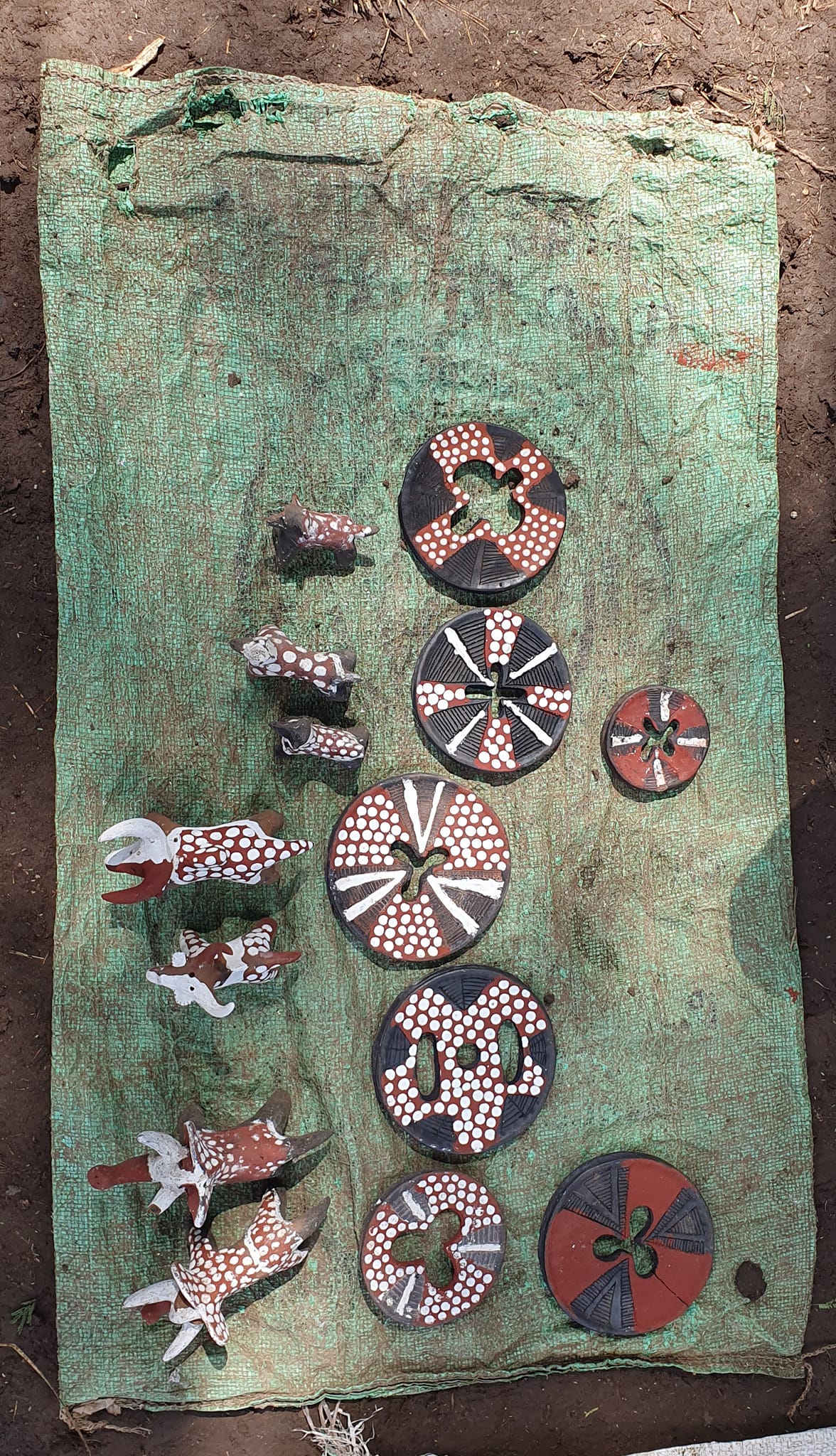
They are trying to sell the disks they make, some small animal figurines and the metal bracelets they make, and provide income to the village. Many of the tribesmen behave very timidly. It’s just that children are very active and try to communicate intensely with us. They examine our bags, our hair, our faces, touch us, laugh and try to talk to us. Some young people and children want to paint our faces with the paints they use in their own face painting.
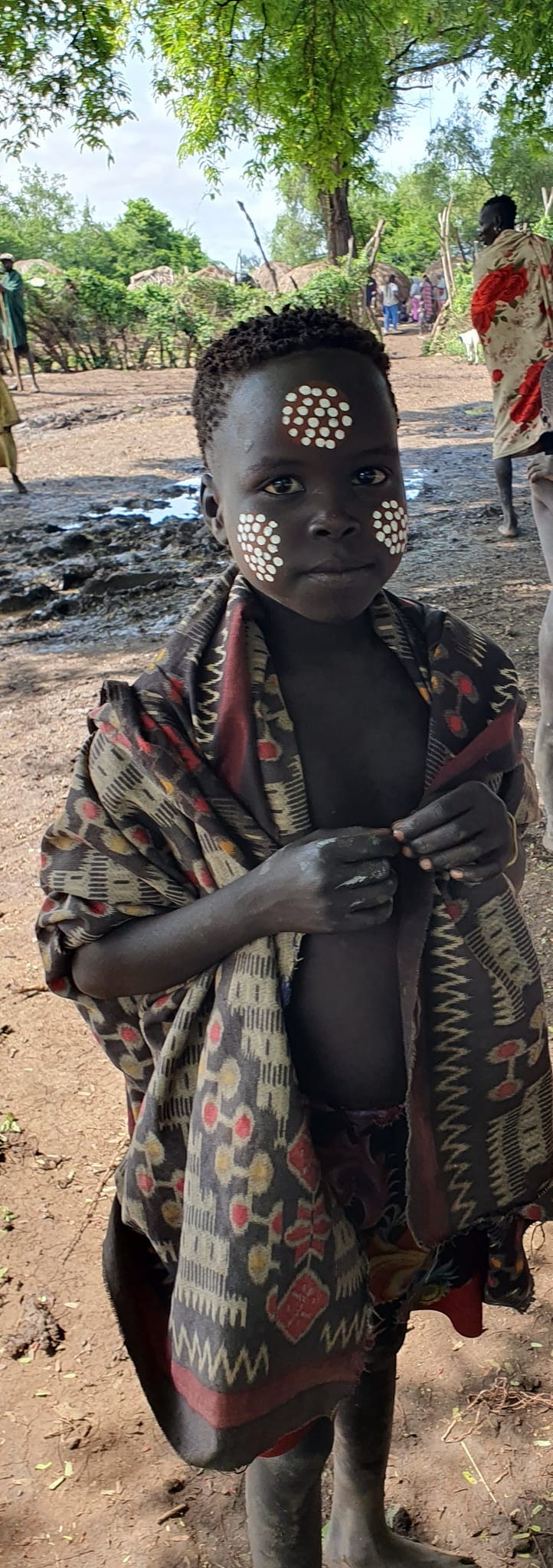
The roads of the village are mud. The people of the tribe walk barefoot on these muddy roads and live together with their animals in the most primitive conditions. The village does not have a fountain.
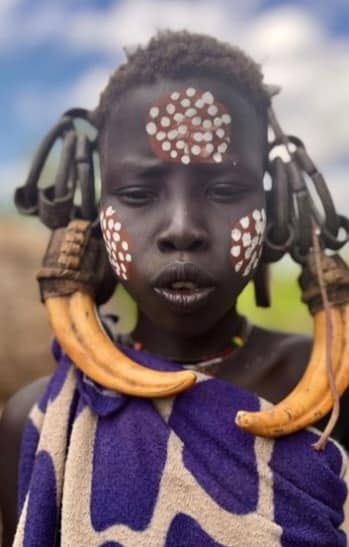
The water in the tribes is not clean and has to be carried in canisters from rivers flowing from far away. Due to the lack of clean water, diseases occur in the village, especially among children.
There is no toilet in the village.
They meet their toilet needs in nature.
We tour the village on this very slippery muddy ground and buy some souvenirs.

At the back of the village, the chief of the tribe takes us to an empty land and explains that the government is trying to dissuade them from hunting animals. The village guard comes to us with a Kalashnikov rifle in his hand. He was also protecting the border region since the region we were in was very close to South Sudan.

The tribal chief states that they both feed on the animals they hunt in these lands and sell some products such as ivory illegally at the Sudanese border, but he states that the local government is trying to give up this situation and direct them to agriculture
We listen to the tribal leader’s explanations under the trees of the village because the sun is so strong that our faces turn red as beets in a very short time.
After spending an hour or two with the tribe in the village, we return to our vehicles.
Since we are thirsty, we turn to the water in the plastic bottles we brought with us in our vehicles.
It comes to my mind that children shepherding animals on the roads ask us for used plastic bottles because only thanks to these plastic bottles they can keep water with them throughout the day, even if it is not clean.
I think how valuable clean drinking water is for all of us and that many people are not even aware of it.
We are facing completely different lives and I remember what a luxury the water we drink and the life we live are compared to others.

Ethiopia told us many stories and taught us many things.
I am preparing to share these with you with great pleasure in different articles in the coming days.

